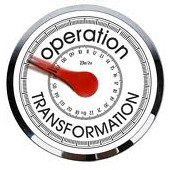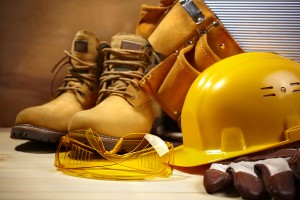Sustainable levels of safety excellence are achieved only when everyone is pulling together to make their work as safe and productive as possible.
 Partner-Centered Safety is a robust, proven way to bring people together to achieve sustainable levels of safety excellence being based on deeply held beliefs and values.
Partner-Centered Safety is a robust, proven way to bring people together to achieve sustainable levels of safety excellence being based on deeply held beliefs and values.
- People want to be treated as people.
- Most people have good minds and think.
- People want to know what is going on.
- People want to be successful and want to work safely.
- People love their kids and want to go home safely, everyday.
- People come together as partners to co-create their shared future in a structured, focused, intense, disciplined dialogue using the Process Enneagram©.
- People are self-organizing all the time openly and freely sharing information, building relationships of trust and interdependence through their agreements about how they are willing to work together and creating meaning.
- All the people at all the levels in the organization are in this together contributing from their unique roles and perspectives.
- People want to be heard, listened to, valued and respected.
A second element of Partner-Centered Safety relates to the environment in which everyone works that is complex in the sense that ideas, conditions, people, outside influences, etc. are interacting and changing all the time. Every decision is made in these complex situations yet no one has all the information, sees everything and has their mind totally focused on the specific task at hand. To over come these everyone needs help and support so that the best decisions are made in the moment of taking action.
A third element of Partner-Centered Safety is “The Bowl”. In co-creating their shared future and operating out of these shared beliefs and values a container is created consisting of their mission, vision, principles of behavior, standards of performance and expectations. This container is called “The Bowl”. The Bowl provides order for the organization, holding it together and within the Bowl the people have the freedom to make the best decisions possible. A major responsibility of the leaders and managers is to help everyone understand and maintain the Bowl through continuous conversations and interactions. If someone becomes a problem in not working this way or in violating the Bowl, management must address and deal with it. All the people have a responsibility to work within the Bowl holding each other accountable to live up to their shared agreements.
 Most of us working in safety have been brought up to see organizations as if they are machine-like. This thinking goes all the way back to Descartes (1596-1650) and Newton (1642-1727). We use reductionist approaches to try to understand them. We seek cause/effect relationships. We use linear processes for training and the like, prescribing answers and doing things TO the people. We work on this part or that part trying to fix the whole thing.
Most of us working in safety have been brought up to see organizations as if they are machine-like. This thinking goes all the way back to Descartes (1596-1650) and Newton (1642-1727). We use reductionist approaches to try to understand them. We seek cause/effect relationships. We use linear processes for training and the like, prescribing answers and doing things TO the people. We work on this part or that part trying to fix the whole thing.  The first part of this work is sharing all information and talking together about it. Another part is building trust and interdependence with the people as we openly discuss what is happening, what we are doing and why. The third part of this work is helping people to see the big picture and how important their part is to the success of the whole business.
The first part of this work is sharing all information and talking together about it. Another part is building trust and interdependence with the people as we openly discuss what is happening, what we are doing and why. The third part of this work is helping people to see the big picture and how important their part is to the success of the whole business. Most of the safety people I’ve come to know approach organizations as if they are mechanical things to manipulate. Organizations are structured in functions. Knowledge is structured in pieces. People are narrowly skilled. Motivation is based on external factors. Information is shared on a need to know basis. Change is a troubling problem. People work in prescribed roles seeing only their part of the work. If change is needed people are moved around like chairs. Training is provided in abundance. Safety programs are set up as step-by-step processes where things are arranged in a prescribed sequence.
Most of the safety people I’ve come to know approach organizations as if they are mechanical things to manipulate. Organizations are structured in functions. Knowledge is structured in pieces. People are narrowly skilled. Motivation is based on external factors. Information is shared on a need to know basis. Change is a troubling problem. People work in prescribed roles seeing only their part of the work. If change is needed people are moved around like chairs. Training is provided in abundance. Safety programs are set up as step-by-step processes where things are arranged in a prescribed sequence.  Overlap: All three of these areas of safety are often lumped together as SHE, EHS or HSE. When we lump these all together we can miss things so I think it is useful to see these three overlapping, interacting areas of our safety and health work. There is some overlap between Occupational Safety and Occupational Health like the proper selection and use of respirators. There is some area of overlap between Occupational Health and Process Safety like preventing chronic exposures to toxic chemicals. There is some overlap between Process Safety and Occupational Safety like locating trailers and offices away from operating areas using large quantities of flammable and explosive materials.
Overlap: All three of these areas of safety are often lumped together as SHE, EHS or HSE. When we lump these all together we can miss things so I think it is useful to see these three overlapping, interacting areas of our safety and health work. There is some overlap between Occupational Safety and Occupational Health like the proper selection and use of respirators. There is some area of overlap between Occupational Health and Process Safety like preventing chronic exposures to toxic chemicals. There is some overlap between Process Safety and Occupational Safety like locating trailers and offices away from operating areas using large quantities of flammable and explosive materials.




